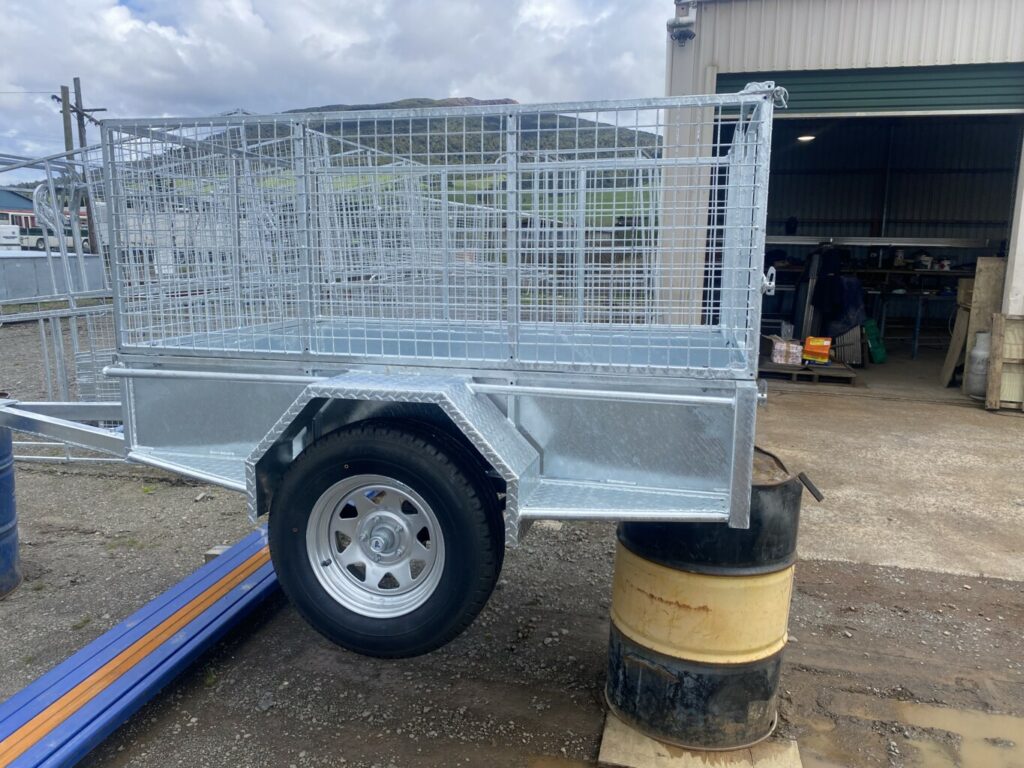Does my trailer need a tandem suspension?
If you’re wondering whether or not your trailer needs a tandem suspension, the answer is probably yes. Tandem suspensions are designed to provide a smoother ride, and they’re especially important if you’re carrying a heavy load. They distribute the weight evenly so that the trailer doesn’t bounce around as much.
Okay, but why not just buy a stronger single axle?
There are four big reasons for adding extra axles:
Tires
If you want to carry more weight, you need to get bigger tires. However, tires with a higher capacity are usually bigger in diameter, which can affect the height of your bed, as well as a few other details.
Safety
If you have a single axle and you damage one tire, you will have a major problem. However, if you have an extra tire on each side, you can usually pull over before serious damage occurs.
Load Distribution
The load is better distributed when there are multiple axles since it is spread over a larger area of the frame. This strengthens the overall structure.
Ride Quality
If a trailer has more than one axle, the load is spread out over multiple points. This means that when a tire hits a bump or pothole, the load-sharing linkage (the equalizer) helps to reduce any bouncing or jarring of the trailer. This produces a smoother ride.
Which tandem system is right for my trailer?
Leaf Spring
The most common and least expensive suspension system is the leaf-spring suspension system. When looking for a tandem leaf-spring setup, you can choose between the “Slipper” style (fastened with a bolt at one end) or “Double-Eye” (fastened with a bolt at both ends). As a rule of thumb, the “Slipper” style is better for heavy loads (6000 lb axles and more) and “Double-Eye” is better for lighter applications (4000 lb axles and less). Both leaf springs need to be placed in tandem using an equalizer to help distribute weight more evenly between the two axles.
Torsion Axles
Two torsion axles side by side are more accurately referred to as “twin axles” rather than “tandem axles.” This is because the two axles do not interact with each other, and therefore cannot equalize (load share) when the road is uneven. Basically, if you hit a bump or pot hole, the front axle will take the entire load, forcing the rear axle up into the air. Depending on your capacity, this might become a serious overload issue. While it’s true that torsion axles handle overload conditions better than leaf springs, the tires and the frame do not.
Hybrid equalizer using rubber
One of the advantages of using rubber torsion axles is vibration damping. Similarly, the leaf-spring tandem setup can be improved by adding rubber to the equalizer, providing vibration damping and load-sharing capabilities on uneven roads.
Center Pivot / Walking Beam
There is also the option of a Center Pivot, or “Walking Beam” suspension, to accommodate equalization, which is entirely different from a tandem axle setup. An example of this type of suspension is the Silent Ride suspension from Timbren.
This is a quality system, but it is more expensive than a conventional leaf-spring suspension. Additionally, because much of the load is concentrated in a relatively small area, the trailer frame might need to be strengthened where the hanger is installed.
Which one will give my trailer the most stability?
There are a number of factors that contribute to axle/trailer stability. Proper placement of trailer axles along the frame is one of the most important factors. Axles mounted too far to the rear put too much weight on the trailer hitch causing undue wear on the tow vehicle’s suspension and tires. Too far forward and the tongue weight won’t be enough, causing the trailer to sway badly.
The mounting point for a single or tandem-axle setup is 40% the length of the trailer bed, measuring from the back end (length x .4). For a tandem axle setup, the 40% mark lines up with the centre of the equalizer. A trailing arm is a very stable way to mount an axle. It’s one of the reasons people like the feel of torsion axles. (But as we said before, twin torsion axles – although very stable – don’t offer any equalization.)
When two leaf-spring axles are mounted without an equalizer, the back axle acts like a leading arm, which is not a stable setup. But if they are connected with an equalizer in the centre, the back axle becomes more stable.

